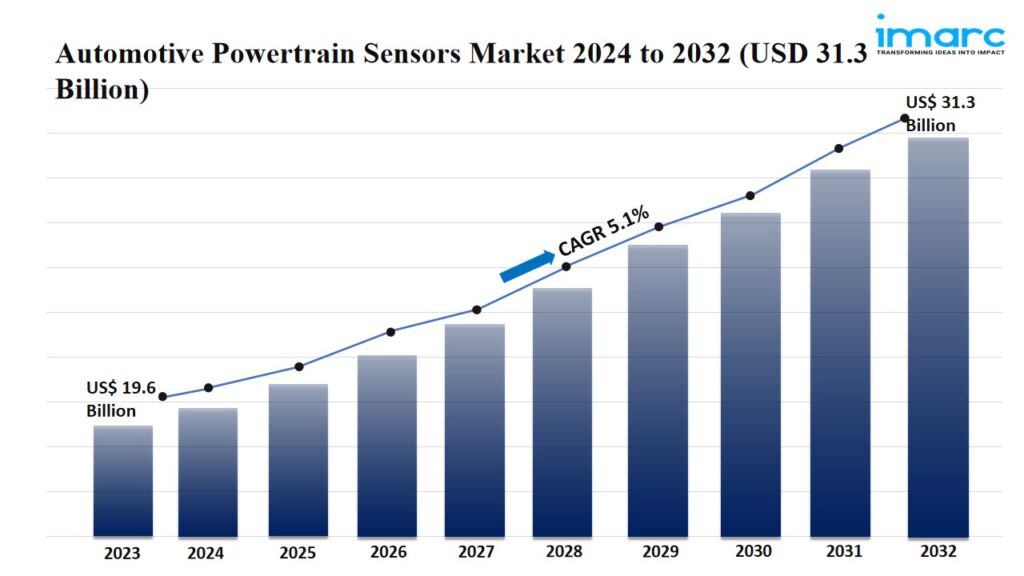
IMARC Group’s report titled “Automotive Powertrain Sensors Market Report by Sensor Type (Temperature Sensors, Position Sensors, Exhaust Sensors, Knock Sensors, Speed Sensors, Torque Sensors, Pressure Sensors, and Others), Powertrain Subsystem (Engine Management Sensors, Transmission Management Sensors, Power Steering Sensors), Vehicle Type (Internal Combustion Engines, Electric Vehicles), Sales Channel (Original Equipment Manufacturer (OEMs), Aftermarket), and Region 2024-2032”. The global automotive powertrain sensors market size reached US$ 19.6 Billion in 2023. Looking forward, IMARC Group expects the market to reach US$ 31.3 Billion by 2032, exhibiting a growth rate (CAGR) of 5.1% during 2024-2032.

For an in-depth analysis, you can refer sample copy of the report: https://www.imarcgroup.com/automotive-powertrain-sensors-market/requestsample
Factors Affecting the Growth of the Automotive Powertrain Sensors Industry:
Powertrain sensors play a crucial role in monitoring various parameters of the engine, such as temperature, pressure, and fuel mixture. By accurately measuring these parameters, sensors help optimize engine performance, leading to improved fuel efficiency. Advanced sensors provide real-time data to the engine control unit (ECU), allowing for precise control of fuel injection, ignition timing, and other engine functions. This fine-tuning of engine management helps maximize fuel efficiency while maintaining optimal performance.
Electric vehicles (EVs) rely on high-capacity batteries to store and deliver energy to the electric motor. Powertrain sensors are crucial for monitoring battery health, temperature, voltage, and state of charge (SoC). Accurate data from these sensors ensures efficient battery management, prolongs battery life, and maximizes vehicle range. Powertrain sensors play a vital role in monitoring the performance and efficiency of electric motors. Sensors measure parameters, such as motor speed, torque, and temperature, enabling precise control of motor operation. This ensures optimal performance, energy efficiency, and thermal management of the electric powertrain.
Advanced sensor technologies, such as micro-electromechanical systems (MEMS), offer higher accuracy, sensitivity, and reliability compared to traditional sensor designs. This allows powertrain sensors to provide more precise measurements of critical parameters like temperature, pressure, and position, leading to enhanced overall performance of the powertrain system. Technological advancements are enabling the miniaturization of sensors without compromising their performance. Smaller sensor sizes facilitate easier integration into the tight spaces of modern vehicle powertrains, while also reducing weight and cost.
Leading Companies Operating in the Global Automotive Powertrain Sensors Industry:
